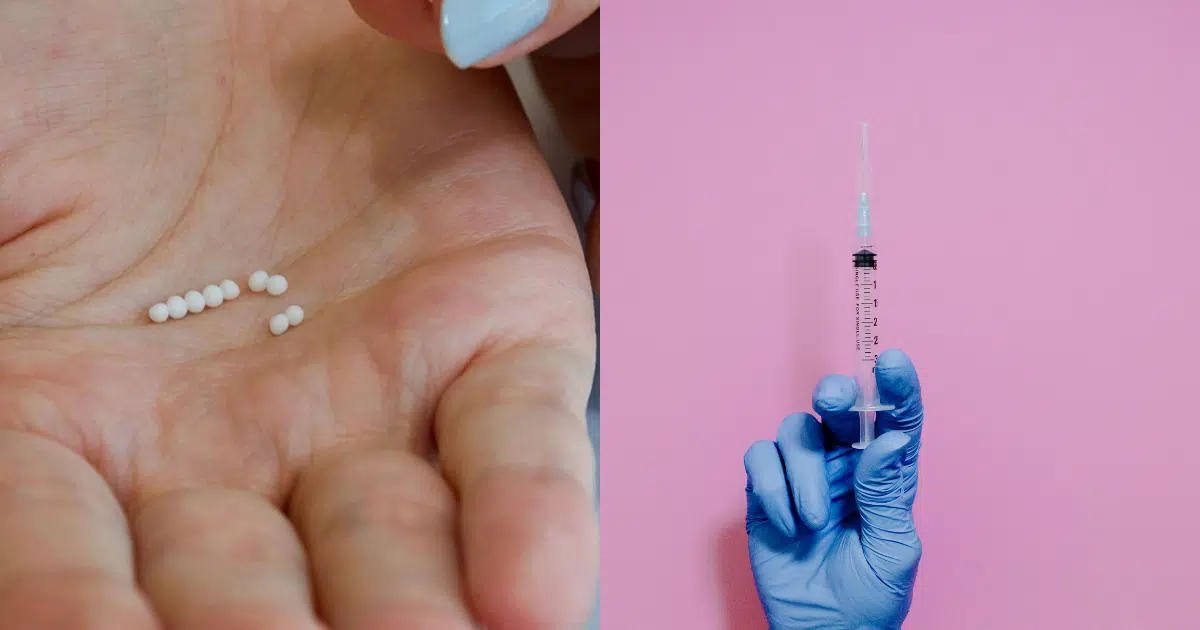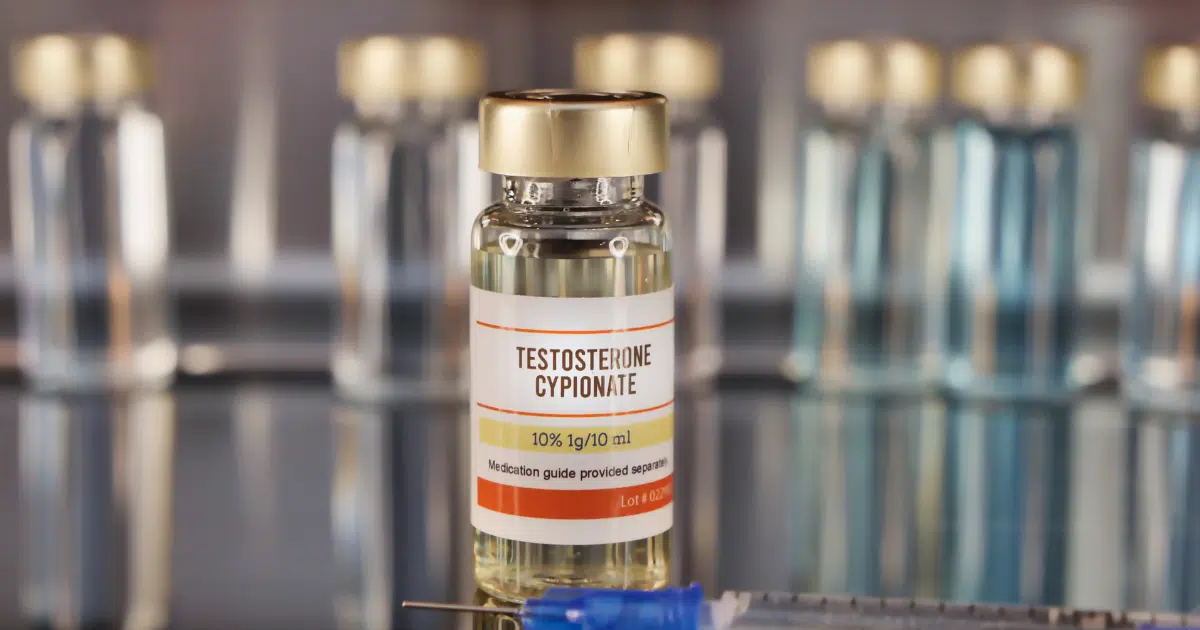When you’re considering hormone replacement therapy, the delivery method you choose can make all the difference in your treatment success and quality of life. If you’re dealing with symptoms of hormone imbalance—fatigue, mood swings, weight gain, or decreased libido—you’ve likely discovered that how you receive your hormones matters just as much as what hormones you receive.
At AZ Health Solutions in Merritt Island, we frequently hear patients ask: “Should I choose hormone pellets or injections?” It’s one of the most important decisions you’ll make in your hormone optimization journey, and the answer isn’t the same for everyone.
Dr. Ashley Zawodniak, our board-certified internist and hormone optimization specialist, has helped hundreds of Brevard County residents navigate this choice. In this comprehensive guide, we’ll examine both delivery methods, share real-world patient experiences, and help you understand which option might be best for your unique lifestyle and health goals.
Understanding Hormone Delivery Methods
Before diving into the specifics of pellets versus injections, it’s important to understand why delivery method matters so significantly in hormone replacement therapy.
Why Delivery Method Impacts Treatment Success
Your body doesn’t just need hormones—it needs them delivered in a way that mimics natural hormone production. The ideal hormone delivery method provides consistent hormone levels throughout the day and month, optimal absorption into your bloodstream, minimal side effects from peaks and valleys, convenience that fits your lifestyle, and cost-effectiveness for long-term treatment.
Many patients come to our Merritt Island clinic frustrated with previous hormone treatments that caused energy rollercoasters, mood fluctuations, sleep disruptions, and treatment fatigue. When hormone levels fluctuate dramatically, patients experience unpredictable symptoms that can disrupt their daily lives.
Understanding the differences between hormone pellets and injections is crucial for making an informed decision about your hormone therapy. Each method offers unique advantages and considerations that may make one more suitable for your specific needs and lifestyle.
Hormone Pellet Therapy Deep Dive
What Are Hormone Pellets?
Hormone pellets are tiny, rice-grain-sized cylinders containing bioidentical hormones. At AZ Health Solutions, we use EvexiPEL hormone pellets, which represent the gold standard in pellet therapy technology. These pellets are small, about the size of a grain of rice, and are inserted just beneath the skin during a simple, 10-15 minute in-office procedure.
The pellets gradually release hormones directly into the bloodstream for 3-6 months, providing steady hormone levels without the fluctuations common with other delivery methods. This consistent hormone release makes pellets an attractive option for many patients seeking convenience and stability.
How Pellet Therapy Works
The pellet insertion process is straightforward and involves a minor surgical procedure. A small area on your hip or buttock is cleaned and numbed with local anesthetic. A tiny incision, about 3mm, is made using a specialized tool, and the pellets are inserted under the skin. The small incision is then closed with medical tape or a small bandage, and you can return to normal activities within 24-48 hours.
Once implanted under the skin, the pellets dissolve slowly, releasing hormones in response to your body’s needs. They release more hormones when you’re active or stressed, and less when you’re at rest. This responsive delivery system closely mimics your body’s natural hormone production patterns.
Benefits of Hormone Pellet Therapy
Pellets offer numerous advantages for hormone replacement therapy. The set-and-forget approach means no daily applications or weekly injections to remember. Steady hormone levels prevent energy crashes and mood swings that can occur with other methods. Treatments typically last 3-4 months for women and 4-6 months for men, making them highly convenient.
The responsive delivery system releases hormones based on your body’s activity and stress levels, providing optimal hormone balance throughout the day. This consistent hormone release helps maintain stable energy levels, mood, and overall well-being.
From a lifestyle perspective, pellets are travel-friendly with no medications to pack or refrigerate. They’re exercise compatible with no restrictions on swimming, bathing, or physical activity after the initial healing period. There are no concerns about contact with partners, unlike some topical treatments, and they offer professional convenience with no interruptions to your work schedule for frequent treatments.
Potential Considerations with Pellet Therapy
While pellets offer many benefits, there are some considerations to keep in mind. The initial investment is higher compared to monthly prescriptions, and insurance typically doesn’t cover bioidentical hormone pellets. However, cost-effectiveness often improves over time due to less frequent treatments.
The insertion requires a minor in-office procedure every 3-6 months, with a brief recovery period and activity restrictions. There’s a rare risk of pellet extrusion or infection, occurring in less than 1% of cases. Once inserted, pellets cannot be easily adjusted until the next treatment, requiring careful initial dosing based on comprehensive testing. Most patients find their optimal dosing within 1-2 treatments.
Hormone Injection Therapy Analysis
Understanding Hormone Injections
Hormone injections involve receiving bioidentical hormones through intramuscular injection, typically in the thigh, buttock, or upper arm. Depending on the specific hormone and formulation, injections may need to be administered weekly, bi-weekly, or monthly. This method provides direct delivery of hormones into the muscle tissue, where they’re absorbed into the bloodstream.
Types of Injectable Hormones
Testosterone injections are the most common form of hormone injections. Testosterone cypionate is longer-acting and typically injected every 1-2 weeks. Testosterone enanthate has a similar duration to cypionate. Testosterone propionate is shorter-acting and requires more frequent injections.
Other injectable hormones include estradiol for women requiring estrogen replacement, progesterone often combined with estrogen therapy, and HCG sometimes used to maintain natural hormone production. Each type has specific benefits and injection schedules.
Benefits of Hormone Injection Therapy
Injections offer precise dosing control with exact amounts that can be measured and adjusted easily. Quick adjustments mean dosing changes can be implemented immediately, allowing for gradual titration to slowly increase or decrease doses. There’s also combination flexibility, as multiple hormones can be given separately or together.
From a cost perspective, injections have a lower initial cost and are less expensive to start than pellet therapy. Some formulations may be covered by insurance, and generic options are available for certain hormone types. This creates predictable monthly costs that are easier to budget for ongoing treatment.
Clinically, injections provide rapid onset with effects felt within days of injection. There are established protocols with decades of research supporting injection therapy. The treatment is reversible, with effects wearing off if treatment needs to be stopped, and monitoring is easier with blood levels that can be checked at various points in the cycle.
Potential Challenges with Injection Therapy
The convenience factors can be challenging for some patients. Frequent appointments requiring weekly or bi-weekly clinic visits can be disruptive. If self-administering, there’s a learning curve and the need for comfort with needles. Travel can be complicated when needing to transport medications and injection supplies, and missing injections can cause symptom return.
Hormone level fluctuations create a peak and valley pattern where hormone levels rise after injection and then decline. Some patients experience symptom cycling with mood and energy fluctuations. Timing sensitivity makes consistent injection schedules crucial for optimal results, and end-of-cycle symptoms may occur just before the next injection is due.
Lifestyle considerations include injection anxiety for those uncomfortable with regular needle use. Site rotation is needed to prevent tissue damage from repeated injections. Storage requirements may include refrigeration for some formulations, and partner considerations may be necessary if self-injecting and needing assistance or training.
Head-to-Head Comparison: Pellets vs Injections
Understanding the Differences Between Hormone Pellets and Injections
When comparing hormone pellets and injections, several key factors distinguish these two delivery methods. Treatment frequency is one of the most significant differences—pellets require insertion every 3-6 months, while injections may need to be administered weekly to monthly.
Daily maintenance requirements also differ substantially. Pellets require no daily attention once inserted, while injections administered at the clinic require no daily maintenance but do need regular appointments. Travel impact varies significantly, with pellets having no restrictions while injections require transporting supplies.
Hormone Level Consistency Comparison
Pellet therapy provides steady hormone levels 24/7, releasing more hormones during stress or physical activity while maintaining consistent levels throughout the treatment period with minimal day-to-day variation. This stable hormone release helps patients avoid the energy crashes and mood swings that can occur with fluctuating hormone levels.
Injection therapy creates peak levels immediately after injection with a gradual decline until the next injection. This pattern can lead to potential symptom cycling and requires consistent timing for optimal results. Some patients adapt well to this pattern, while others prefer the consistency that pellets provide.
Side Effects and Tolerability
Pellets typically cause temporary bruising or soreness at the insertion site, with a rare risk of pellet extrusion occurring in less than 1% of cases. Minimal systemic side effects occur due to steady hormone levels, though there may be an occasional temporary increase in symptoms during the first week as the body adjusts.
Injections may cause injection site pain or swelling, with potential for mood swings between injections. Possible acne flares can occur with testosterone injections, and there’s a risk of injection-related anxiety or needle phobia for some patients.
Cost Analysis Over Time
When comparing costs, pellet therapy typically has higher upfront costs but fewer appointments throughout the year. Injection therapy has lower initial costs but requires more frequent clinic visits and ongoing monthly expenses. Direct Primary Care members receive significant discounts on all hormone services, making either option more affordable.
The total cost comparison depends on individual needs, dosing requirements, and insurance coverage. Many patients find that the convenience and consistent results of pellets justify the initial investment, while others prefer the lower upfront costs and more frequent monitoring that injections provide.
Dr. Zawodniak’s Clinical Experience
Patient Selection Criteria for TRT Pellets vs TRT Injections
After years of experience with hormone optimization in Merritt Island and surrounding Brevard County communities, Dr. Zawodniak has developed specific criteria for recommending pellets versus injections based on patient needs and lifestyle factors.
Ideal candidates for pellet therapy include busy professionals who travel frequently, patients with a history of poor adherence to daily medications, those experiencing mood swings with other delivery methods, individuals seeking maximum convenience, and patients with stable hormone needs who prefer less frequent treatments.
Ideal candidates for injection therapy include patients new to hormone therapy who want gradual introduction, those requiring frequent dose adjustments during the initial optimization phase, individuals comfortable with self-injection or regular clinic visits, patients with budget constraints preferring lower upfront costs, and those preferring more control over their treatment timing.
Real Patient Success Stories
Case Study 1: Sarah, 45, Marketing Executive experienced significant improvement with pellets after struggling with hormone creams during frequent travel. The mood swings were affecting her work presentations, but after switching to EvexiPEL pellets, she maintained consistent energy and mood throughout her demanding schedule.
Case Study 2: Michael, 52, Construction Manager found that his testosterone needs varied significantly with his physical job demands. Weekly injections allowed him to adjust his dosing based on his work schedule, and Dr. Zawodniak helped him find the perfect protocol for his lifestyle.
Case Study 3: Lisa, 38, Teacher and Mom needed a solution that worked without daily attention. Between teaching full-time and managing three children’s schedules, pellets provided the consistency she needed to maintain energy and balance throughout the school year.
Clinical Outcomes Data
From Dr. Zawodniak’s practice experience, 90% of patients report improved energy levels within 2-3 weeks of starting pellet therapy, while 85% experience better sleep quality. Mood stability improves in 80% of patients, and there’s a 95% patient retention rate after the first year of treatment.
With injection therapy, 85% of patients report energy improvement within 1 week, 78% experience better sleep quality, and 75% report improved mood with some cycling between injections. The patient retention rate is 88% after the first year of treatment.
Combination Approaches
Dr. Zawodniak sometimes recommends combination approaches for optimal results. Some patients benefit from pellets providing base hormone levels with supplemental injections for specific needs or timing. This approach is particularly useful for athletes or those with varying physical demands.
Sequential treatment may involve starting with injections to establish optimal dosing, then transitioning to pellets once levels are stable. This allows for personalized optimization while minimizing the risk of over- or under-dosing with the initial pellet insertion.
Which Option Is Right for You?
Decision-Making Framework for Hormone Therapy Options
Choosing between pellets and injections requires careful consideration of multiple factors. Your lifestyle assessment should include travel frequency, schedule flexibility, comfort with medical procedures, and preference for treatment convenience.
Choose pellets if you travel frequently for work or pleasure, have a busy schedule with little flexibility, prefer set-and-forget medical treatments, want the most consistent hormone levels possible, are comfortable with minor procedures, and value long-term convenience over initial cost.
Choose injections if you prefer more control over your treatment timing, are new to hormone therapy and want gradual introduction, need frequent dose adjustments initially, are comfortable with needles and injections, want lower upfront costs, or have specific timing needs for your treatment.
Medical Considerations for Optimal Hormone Balance
Pellets may be better for patients with absorption issues affecting other delivery methods, those experiencing significant mood swings with fluctuating hormone levels, individuals with high stress levels requiring responsive hormone delivery, and patients with proven stable hormone needs.
Injections may be better for patients requiring rapid dose adjustments, those with changing medical conditions affecting hormone needs, individuals with bleeding disorders or healing issues, and patients wanting to start with a lower financial commitment while exploring hormone therapy benefits.
Personal Preference Factors
Consider your comfort level with minor procedures versus regular injections, preference for frequent check-ins or minimal appointments, and comfort with less day-to-day control over your treatment. Financial planning preferences between higher upfront costs with less frequent payments versus monthly budgeting may also influence your decision.
Your support system matters too—consider whether you have reliable transportation for frequent appointments, someone who can help with injections if needed, and how important treatment independence is to your lifestyle.
Local Considerations for Merritt Island Patients
Service Availability at AZ Health Solutions
Our Merritt Island practice offers comprehensive hormone therapy services with an EvexiPEL certified provider on-site. Same-day pellet insertion is available for established patients, and we maintain a comfortable, private procedure room with post-procedure monitoring and support.
For injection therapy services, we provide weekly injection appointments with flexible scheduling including early morning and evening slots. Self-injection training and support are available for patients who prefer home administration, along with prescription management and refill coordination.
Scheduling and Accessibility for Brevard County Residents
For busy Brevard County residents, we offer same-day appointments for urgent needs, extended hours to accommodate work schedules, direct physician access via text or phone for questions, and minimal wait times with personalized scheduling.
Our convenient Merritt Island location serves all of Brevard County with easy access from Cocoa, Rockledge, Viera, Melbourne, and Titusville. We provide ample parking and maintain a comfortable waiting area in a professional, discrete medical environment.
Direct Primary Care Integration
Enhanced value for DPC members includes a 10% discount on all hormone therapy services, saving up to $99 per month. Included follow-up consultations for hormone optimization, direct access to Dr. Zawodniak for hormone-related questions, coordinated care with your primary healthcare needs, and priority scheduling for hormone appointments make membership valuable.
Comprehensive care coordination integrates hormone therapy with preventive medicine services, coordinates with other specialists when needed, provides a complete health optimization approach, and establishes a long-term partnership in your wellness journey.
Next Steps: Starting Your Hormone Optimization Journey
Your Path to Optimal Hormone Health
If you’re experiencing symptoms of low testosterone, hormone imbalance, or other hormonal issues and considering treatment options, the first step is comprehensive evaluation and testing. At AZ Health Solutions, we make this process straightforward and informative.
Step 1: Schedule Your Meet & Greet Consultation
Your 60-minute comprehensive evaluation with Dr. Zawodniak includes complete symptom assessment and health history review, discussion of treatment options including pellets vs injections, personalized recommendations based on your unique needs, and transparent pricing for your specific treatment plan.
Step 2: Comprehensive Hormone Testing
We provide advanced hormone panels beyond basic testing, professional interpretation of results, written treatment recommendations, and evaluation of all relevant hormones affecting your symptoms.
Step 3: Treatment Plan Development
Your customized protocol is based on test results and preferences, with clear explanation of chosen delivery method, timeline for expected improvements, and ongoing monitoring and adjustment plan.
Step 4: Treatment Implementation
Professional administration of your chosen therapy includes comprehensive patient education and support, direct access to Dr. Zawodniak for questions, and regular monitoring to ensure optimal results.
Why Choose AZ Health Solutions for Your Hormone Therapy
Expertise You Can Trust:
Dr. Ashley Zawodniak is a board-certified internist and hormone optimization specialist, EvexiPEL certified provider for advanced pellet therapy, Fellow of the American College of Physicians (FACP), with extensive experience with both delivery methods.
Personalized Care:
Extended appointments without rushing, direct physician access via phone, text, or email, treatment plans tailored to your unique needs and lifestyle, and ongoing support throughout your optimization journey ensure optimal results.
Comprehensive Approach:
Integration with primary care through DPC membership, coordination with other aspects of your health, evidence-based protocols with personalized modifications, and long-term partnership in your wellness goals provide complete care.
Convenient Merritt Island Location:
Serving all of Brevard County with flexible scheduling including evenings, comfortable professional environment, and easy access from throughout the Space Coast makes treatment convenient.
Ready to Take Control of Your Hormone Health?
Don’t let hormone imbalance continue to impact your energy, mood, relationships, and quality of life. Whether pellet therapy or injections prove to be the right choice for you, the most important step is getting started with proper evaluation and expert guidance.
Many patients find that understanding the differences between hormone pellets and injections helps them make an informed decision about their treatment. Both options offer effective solutions for hormone replacement therapy, and the choice often comes down to personal preferences, lifestyle factors, and individual response patterns.
Medical Disclaimer:
This article is for educational purposes only and should not replace professional medical advice. Hormone replacement therapy involves medical risks and benefits that should be discussed with a qualified healthcare provider. Individual results may vary, and treatment recommendations should be based on comprehensive medical evaluation and testing. Always consult with a licensed physician before starting any hormone therapy program.





0 Comments